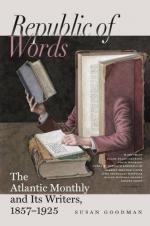The convulsions were often accompanied by an urgent instinctive desire for certain extreme remedies, sometimes of a frightful character,—as stretching the limbs with a violence similar to that of the rack,—administering on the breast, stomach, or other parts of the body, hundreds of terrible blows with heavy weapons of wood, iron, or stone,—pressing with main force against various parts of the body with sharp-pointed swords,—pressure under enormous weights,—exposure to excessive heat, etc. Montgeron, viewing the whole as miraculous, says,—“God frequently causes the convulsionists the most acute pains, and at the same time intimates to them, by a supernatural instinct, that the formidable succors which He desires that they should demand will cause all their sufferings to cease; and these sufferings usually have a sort of relation to the succors which are to prove a remedy for them. For instance, an oppression on the breast indicates the necessity for blows of extreme violence on that part; an excessive cold, or a devouring heat, when it suddenly seizes a convulsionist, requires that he should be pushed into the midst of flames; a sharp pang, similar to that caused by an iron point piercing the flesh, demands a thrust of a rapier,[12] given in the spot where the pain is felt, be it In the throat, in the mouth, or in the eyes, of which there are numerous examples; and let the rapier be pushed as it may, the point, no matter how sharp, cannot pierce the most tender flesh, not even the eye of the patient: of this, in my third proposition, I shall adduce proof the most incontestable."[13]
To some extent, it would seem, the symptoms themselves, attending the convulsions, appeared, to the observant physician, to warrant the propriety of the remedy desired. Montgeron copies a report of a case made to him, and attested by a gentleman of his acquaintance, a Jansenist, who had persuaded his cousin, Dr. M——, at that time a distinguished physician of Paris, and much prejudiced against the Jansenist movement, to accompany him to a house where there was a young girl subject to the reigning epidemic. They found her in a room with twenty or thirty persons, and at the moment in convulsions. The assistants agreed to place the case in the hands of the physician, and he carefully noted the movements of the patient.
“After a time,” proceeds the reporter, “he was greatly astonished to observe a sudden convulsive retraction of all the members. Examining the patient closely, touching her breast and limbs, he became aware of a contraction of the nerves, which gradually reached such a degree of violence that the whole body was disfigured in a frightful manner. His surprise was extreme, and it was soon changed to alarm, which induced him to forget his prejudices, and to resort to the very means he had previously condemned as useless or dangerous. He caused us to place ourselves, one at the head and one at each hand and foot, and bade us pull moderately. We did so.




